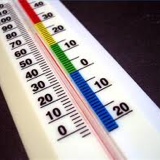Title Page
-
Site conducted
-
Conducted on
-
Conducted By:
-
Location
-
Specific Area Inspected (solar / battery)
-
Scoring Criteria
Compliant – No shortfalls identified, criteria met or standards required achieved
Partially Compliant – Minor shortfalls identified in the standard or requirement, minor opportunities for improvement identified and the standard is still to an acceptable level. (For Example -PAT Testing – Most items tested and in date however a few units have been missed)
Non-Compliant – The standard or requirement has not been achieved and deemed to be unacceptable. Immediate action is required to address the shortfall/s (Example – PAT Testing – Most items out of date and not tested) -
Site secure<br>(No issues booking on with OCC, gates locked and in good working condition)
-
Site entrance <br>(Free of potholes, clearly visible and safe for use)
-
Site signage in good condition and up to date <br>(Main entrance sign is clearly displayed and shows location of BESS, location markers are clear and any other direction or informational markers are in good order)
-
Gerda box <br>(Is the code correct, in good condition, no water ingression, ERPs and fire service documents in place)
-
Car Parking<br>(Does car park have clear signage? Is car park adequately lit? Is there means to stop cars colliding with people/buildings/structures such as bollards/barriers?)
-
Pedestrian Routes<br>(Are pedestrian routes clearly marked? Are they adequately lit? Is there barriers to separate persons from moving vehicles to stop cars colliding with people/buildings/structures such as bollards/barriers? Are drains free from debris and allow water to flow freely away? Is there any standing water?)
-
Pedestrian Routes<br>(Are Pedestrian Routes clear of debris and vegetation to prevent slips/ trips/falls?)
-
Pedestrian Routes/Roads<br>(Are there grit bins that have adequate amounts of salt in them? (Winter Months))
-
Adequate fencing <br>(Is all fencing secure and in good order.)
-
Sites tracks in good conditions <br>(Free of potholes, no road blockages, no potential issues in case of an emergency)
Solar Only
-
Are live stock present?<br>(Are animal fences/ cattle grids adequate?)
-
Cables<br>(Is there adequate protection to prevent damage due to live stock )
-
Access & Egress<br>(Between strings is there safe access egress and is the ground level and stable.)
-
HV transformer/ Inverter container<br>(Are there adequate measures to protect against unauthorised access? Are there any signs of oil leaks?)
Substation and Control room
-
External doors padlocked with appropriate padlock and secure <br>(Check that doors are secure and there are no signs of damage.)
-
Safety Signage<br>(Is there Danger of Death signage displayed on sub-station door? Danger (Sign must capture site HV system Voltage))
-
Are access/ egress walk ways and doors clear <br>(Handrails on stair ways, no poor storage which could prevent doors operating correctly or present a slip/trip hazard)
-
Fire escape routes clear of obstructions<br>(Ensure that all fire exit routes are clear and free of obstructions)
-
Control/ Scada room<br>(Good housekeeping)
-
Are there alarm systems fitted <br>(Check fire alarm, security alarm and other alarm systems are commissioned and operational)
-
Fire alarm fitted, serviced and tested<br>(Check for faults showing on the fire alarm panel and that there is a up to date history of service)
-
CCTV<br>(Systems in working order)
-
Emergency lighting <br>(Check for green indicator and carry out an emergency lighting test)
-
Internal lighting<br>(Is the area adequately light? Are all internal lights working and in good condition)
-
Stat check in date <br>(Check Fire Extinguishers? Are there ladders present in sub-station have they been inspected?)
-
Electrical equipment <br>(Check for evidence of PAT testing)
-
Log book<br>(Does the substation have a log book and has it been filled out)
-
Rescue Equipment <br>(Are they rescue hooks in the sub-station?)
-
First Aid<br>(Are they first Aid Kits and Eye Wash Stations present? Are consumable and eye wash in date i.e. Bandages, plasters ect?)
-
Is there a defibrillator available<br>(Is it in working order? Are the pads and batteries 'in date?)
-
Trailing cables, extension leads and wall sockets <br>(Ensure that extension leads are not overloaded and do not present a trip hazard, there are no signs of overheating on plug sockets or broken exposed conductors.)
-
EEMITs radios <br>(Are EEMITs radios present and in good working order)
-
Notice board and induction file complete & up to date <br>(The following information should be displayed; Health and Safety at Work Poster, Insurance HSE Policy, First Aid DRABC, First Aid Electric Shock, Electricity Regulations Poster, SLD, Simple Actions Poster, Life Savings Rules Poster, Site Map, Building Information Plan – showing fire exits and room layout etc. The site should also have an Emergency Plan, Pollution Incident Response Plan/Site Hazard Plan and servicing records for fire and intruder alarm and induction file. Ensure that all information is up to date and easily accessible.)
-
Heating <br>(All heating and ventilation working and in good condition)
-
Pest Control <br>(Where provided ensure that they are placed correctly usually against skirtings)
-
Cable trenches <br>(Are all cable trenches suitably protected from a risk of falling)
-
Flooring and gratings <br>(Are floors and gratings free from defect)
-
External lights <br>(Are all external lights working and in good condition)
-
External fittings no signs of damage <br>(Check drainpipes, soffits etc for signs of disrepair which could lead to a safety concern)
-
Earthing straps <br>(All metal exit doors should have a visible earthing strap)
-
Meter Room <br>(Good housekeeping)
Welfare Areas
-
Mess area<br>(Good housekeeping, waste bins emptied and food preparation areas cleaned)
-
Toilet facilities<br>(In clean useable condition)
-
Water storage <br>(In good working condition does it need refilling?)
-
Waste storage <br>(Does the septic tank, port aloo, welfare unit tank require emptying)
Storage Areas
-
Is COSHH storage secure, adequate bunds in place and being used appropriately. <br>(Flammable/ hazardous materials are stored in a COSHH cabinet. Is the cabinet locked and the key removed? Are larger items such as oils and coolants stored on bunds?)
-
Spill kits <br>(Are spill kits readily available and suitable for use)
-
Storage area tidy <br>(Items are stored neatly, away from sources of ignition, clear walk ways.)
-
Is waste stored correctly <br>(Segregated, safely away from sources of ignition)
BESS units
-
Are foundations in good order <br>(Free from cracks, any signs of subsidence or sink holes)
-
Are the BESS panels secure <br>(Any signs of damage or vandalism)
-
Transformer fencing <br>(Are fences around the transformer in good order and secure)
-
Do the bunds need draining <br>(Any signs of oil leaks)
-
Are there any other areas worth of note
Workers on site
-
Are the works following the correct RAMs
-
Are all persons booked on to site with OCC
-
Is work being carried out safely
-
Tools and Equipment - All tools and equipment are in good order and within relevant inspection dates (i.e. lifting equipment / PFPE etc...)
-
ADDITIONAL NOTES:
-
ADDITIONAL PHOTOS:














